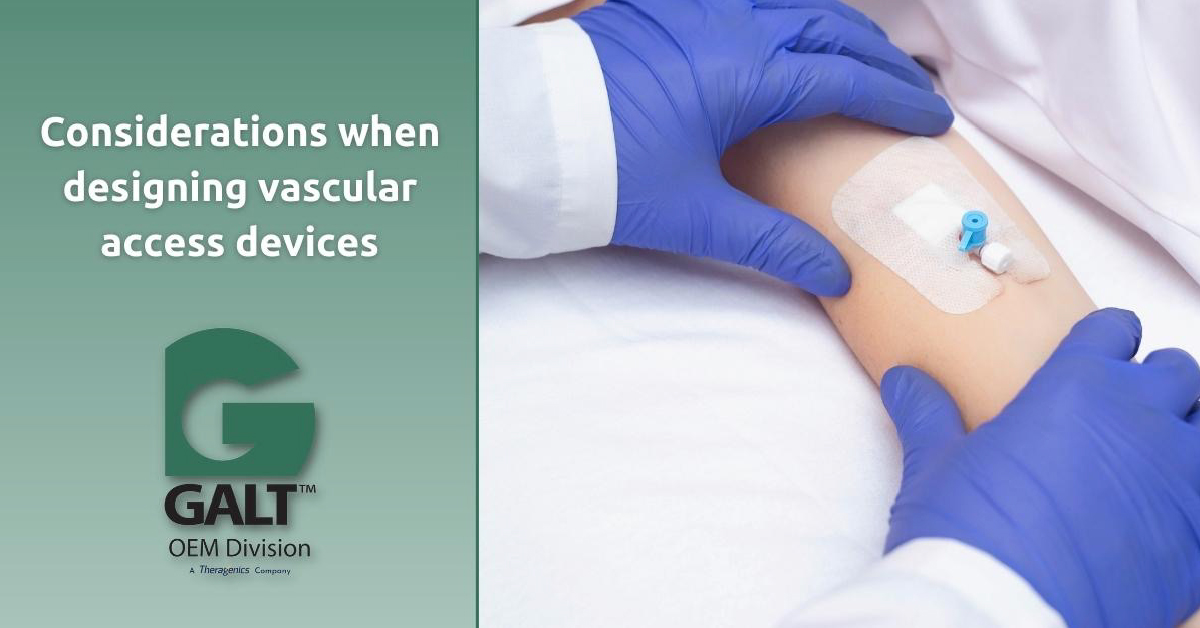Top 5 User Considerations When Designing Vascular Access Products

Vascular access devices are used in hundreds of millions of procedures around the world every year. They have transformed patient outcomes through the development of innovative therapeutic and diagnostic procedures. This level of innovation is ongoing, as even more advanced vascular access products continue to be developed. When going through the process of designing a vascular access device, what are the main considerations you should take into account?
We are going to cover the top five considerations in this blog:
- Patient considerations
- Therapy considerations
- Device considerations
- Procedural considerations
- Physician and facility considerations
All five are essential to achieve the main objectives in the design of vascular access products. Those objectives include:
- Creation of an effective product that physicians want to use
- Ensuring the device is easy to use while minimizing risks to healthcare workers from needlestick injuries and exposure to blood
- Minimizing complications, especially in relation to difficult intravenous access (DIVA) situations (i.e., where two or more punctures are required)
- Ensuring maximum patient satisfaction and comfort
Five Essential Vascular Access Device Design Considerations
1. Patient Considerations
Patient considerations include the therapies, situations, and conditions your vascular access device is being designed for, as well as the complications that can occur both during insertion and while the device is in place.
It is also important to consider strategies in the design of the device that can reduce instances of DIVA, particularly in relation to patient groups at higher risk. This includes patients who are overweight or obese, pediatric patients, the elderly, acute patients, and those who are chronically ill.
2. Therapy Considerations
Some questions to think about in relation to therapy considerations include:
- What is the purpose of the vascular access device?
- What will be the duration of treatment? Is the device for emergency vascular access? Or is it for short-term, mid-term, or long-term access? Different approaches are suitable for each treatment duration. For example, PICC (peripherally inserted central catheters) are best suited for short-term and mid-term treatment durations.
- What therapies will be administered through the vascular access device? What are the characteristics of these infusates in terms of viscosity, volume, pH levels, compatibility, osmolarity, etc?
- What flow rates are required?
3. Device Considerations
Important device considerations for vascular access products include:
- The device should be stiff during insertion to maximize procedure success, before becoming soft and pliable in the body.
- The device should have high levels of kink resistance.
- The materials used for the various elements of the catheter will determine many of the performance characteristics of the device, including strength, pliability, and kink resistance.
- The vascular access device should also be easy to maneuver during insertion.
- Flow rate was mentioned in the section above on therapy considerations. It’s also important flow rate is reliable to help physicians maintain compliance with guidelines and regulations.
- The number of lumens also needs to be carefully considered. More lumens make vascular access devices suitable for a wider range of procedures and applications. One of the downsides of multiple lumens is a higher risk of infection.
- The diameter of the device is another important consideration – the smaller the diameter, the lower the risk of thrombotic complications.
- The device should have an atraumatic tip design.
- Will the device be power injectable?
- Will the device be valved?
4. Procedural Considerations
The procedural considerations when designing a vascular access device include:
- Will there be needlestick protection features and what form will they take?
- What about blood control features and guidelines for use?
- What visualization technologies will be used to help physicians guide the device into position? One of the most common is ultrasound guidance given its effectiveness. Ultrasound guidance also makes it possible to use the device at the bedside.
- What tip location and confirmation features will the device have?
- What insertion, flushing, and locking protocols will the device have?
- What maintenance protocols will the device have to minimize failures or complications post-insertion?
5. Physician and Facility Considerations
Physician and facility considerations mostly involve the level of technical skills that physicians will need to use the device. It can also be beneficial in the design stage of your vascular access device to think about how you will communicate the benefits of the device to physicians to ensure take up and selection in what can often be a crowded market.
In terms of facility considerations, where will the device be used, what additional equipment will be required, and what additional surgical services will be required?
Getting Expert Advice
As you can see from above, there is a wide range of user and patient considerations that need to be taken into account when designing a new vascular access device or sourcing an off the shelf product. Ensure that your partner for vascular access products have infield experience, understand user and patient needs, and can demonstrate a successful history in product design including the regulatory requirements. Get in touch with us at Galt Medical today to speak to a member of our experienced and knowledgeable team.
